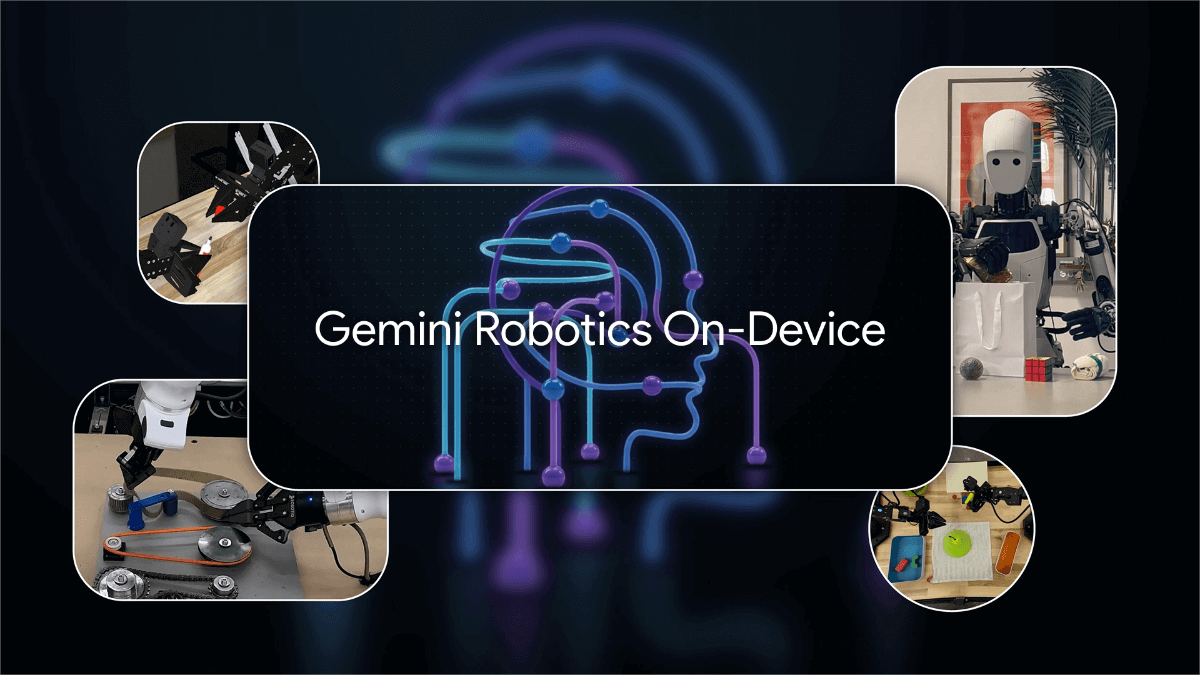Gemini Robotics On-Device – Google’s first on-device embodied AI model
What is Gemini Robotics On-Device?
Gemini Robotics On-Device is the first vision-language-action (VLA) model from Google DeepMind that runs entirely on robotic hardware. It enables robots to perform fine-grained tasks like opening bags or folding clothes by following natural language instructions—without relying on cloud-based computation. Designed for low-latency applications, it supports deployment across various robotic platforms and exhibits strong offline performance. With as few as 50 to 100 demonstration samples, the model can quickly adapt to new tasks, demonstrating remarkable generalization. Google also released the Gemini Robotics SDK to help developers evaluate and deploy the model with reduced cost and risk.

Key Features of Gemini Robotics On-Device
-
Fully On-Device Execution:
Runs entirely on the robot’s local hardware, eliminating reliance on cloud connectivity. It ensures stable operation even in environments with weak or no internet access, solving latency and reliability issues. -
Natural Language Instruction Following:
Understands and processes complex, multi-step commands in natural language, enabling robots to execute tasks precisely according to human intent. -
Fine-Grained Manipulation Tasks:
Supports various robotic embodiments—from humanoid robots to industrial dual-arm robots. It can handle tasks like unzipping lunchboxes, pulling cards, folding clothes, pouring salad dressing, or even assembling belts in an industrial setting. -
Rapid Task Adaptation:
Developers can fine-tune the model for new tasks using just 50 to 100 demonstrations. Even complex tasks can achieve high success rates with under 100 samples—marking Google’s first VLA model to support fine-tuning. -
Cross-Platform Deployment:
The model generalizes well across different robot types, such as the dual-arm Franka FR3 and Apptronik’s Apollo humanoid robot, showcasing strong transferability.
Technical Foundations of Gemini Robotics On-Device
-
Multimodal Reasoning:
Built on Gemini 2.0’s capabilities, the model processes visual, linguistic, and motor signals simultaneously. It uses visual input to perceive the environment, language input to identify tasks, and generates corresponding actions to fulfill them. -
Optimized Architecture for Local Execution:
The model is computationally efficient, enabling low-latency inference directly on robotic hardware without compromising performance. This ensures real-time task execution. -
Fine-Tuning Capability:
As the first VLA model from Google available for fine-tuning, developers can adapt it to new environments and tasks using limited samples. This greatly enhances the flexibility and learning speed of robotic systems. -
Robust Safety Mechanisms:
Incorporates both semantic and physical safety. Through the Live API, the model identifies and prevents unsafe or inappropriate commands. It also interfaces with safety-critical controllers to ensure physical safety during execution.
Project Website
- Official site: https://deepmind.google/discover/blog/gemini-robotics-on-device-brings-ai-to-local-robotic-devices/
Application Scenarios
-
Industrial Manufacturing:
Executes complex assembly tasks such as automotive parts installation and precise electronics integration—boosting productivity and quality. -
Logistics and Warehousing:
Assists in transporting goods, managing inventory, recognizing and categorizing items based on commands, improving workflow efficiency and reducing errors. -
Healthcare and Nursing:
Supports medical staff with tasks like surgical tool delivery and rehabilitation training, easing workloads and improving patient care. -
Domestic Services:
Helps with household chores such as cleaning, organizing, and caring for the elderly or children, enhancing daily convenience and comfort. -
Retail Services:
Offers customer assistance in malls and supermarkets by providing product information, guiding shopping, and handling inventory—enhancing the consumer experience.
Related Posts




